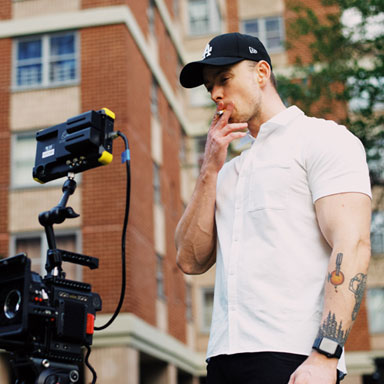‘Summer of Soul’
A throbbing display of “Dark, delightful, glad” individuals, “Summer of Soul (Or, When the Revolution Could Not Be Televised),” is a blissful and welcome expansion to the independent movie narrative subgenre of rock celebrations. Yet, this one, which denotes the first time at the helm of The Roots drummer Ahmir “Questlove” Thompson, accompanies a most lamentable history: Its film reels were covered in a cellar for a considerable length of time, to a great extent inconspicuous, as of recently.
The “QuestloveJawn,” as it’s presented in opening credits, covers the 1969 Harlem Cultural Festival, otherwise known as “The Black Woodstock.” The name stuck over the course of the years not just in light of the fact that the shows harmonized with that other huge stone celebration upstate. The thought for the occasion bloomed from the cinders of the deaths of Dr. Martin Luther King Jr. furthermore Malcolm X, as well as the Civil Rights development, and was made to observe African-American music, culture, and legislative issues, and to advance Black pride and solidarity.
It wasn’t the initial time. The underlying Harlem Cultural Festival occurred in 1967, when a thirty something Harlemite vocalist named Tony Lawrence was employed by the city’s Parks Department to organize summer programming nearby. Over the accompanying three summers, it advanced into a fundamental intersection where Black music, culture, and legislative issues met. It was a place of refuge where stars of the time, similar to the teenaged Stevie Wonder and the pop gathering the fifth Dimension, would play out the absolute most well known tunes in the country. Moreover, white government officials like New York City chairman John Lindsay, and Black social equality pioneers like Jesse Jackson, all felt constrained to show up at the celebration.
The independent movie show series turned into an unmatched achievement, with joined participation numbers assessed at more than 300,000 – almost matching Woodstock’s numbers, where Jimi Hendrix was one of a couple of Black performers. Similar to the case with Woodstock, a movie producer – Hal Tulchin – caught the whole of that year’s Harlem Cultural Festival, which highlighted a frightening Pan-Africanist arrangement that likewise included Nina Simone, Sly and the Family Stone, B.B. Ruler, the Staple Singers, Gladys Knight and the Pips, David Ruffin, Abbey Lincoln and Max Roach, South African Hugh Masekela, Nigerian Babatunde Olatunji, Cuban Mongo Santamaría, Puerto Rican Ray Barretto, and some more.
This independent movie series displayed the variety in the artists, yet in addition filled in as a portrayal of the variety across Harlem: African Americans, Puerto Ricans, Africans, Jamaicans, Panamanians, and others, each carrying with them their own singular styles of music. It was an energizing history of Black music – essentially until that year.
Tulchin shopped the recording to a few expected purchasers, however was more than once told there was no interest. He became disappointed and put away the 40 hours of film in his cellar where it sat generally inconspicuous for the following 50 years, keeping this particular occasion in American history lost – as of recently.
Enter Questlove, who utilizes Tulchin’s recording to reassemble the untold story of the 1969 release. It was viewed as a significant year for Black America – “when the ‘Negro’ passed on and ‘Dark’ was conceived,” a nondescript voice states from the get-go in the independent movie, which helps set the vibe. That year, there was a transformation, as the film proficiently clarifies, in a verifiable second when the privileged few of the Civil Rights development and new Black Power development had a similar stage in congruity. There were likewise light passing minutes, similar to when gospel legend Mahalia Jackson welcomed her mentee Mavis Staples in front of an audience to two part harmony MLK’s main tune, the notorious “Valuable Lord, Take My Hand,” under three years before her demise.
Fuming through the whole narrative, against the background of a racially violent 1960s, is an emphasis on another sort of racial pride and solidarity across the diaspora, which imbues “summer” with a trustworthiness and authenticity. It’s clarified that participants questioned the NYPD with the eventual result of employing the Black Panthers to defend the celebration, expecting Black Lives Matter occasions a very long time down the line.
Questlove and editorial manager Joshua L. Pearson ribbon together independent movie of shows with history examples (Motown, gospel music, the advancement of Black style, the idea of a typical battle among Black individuals around the world), integrating everything with charming memories of the single day in 1969 by the people who were there. The outcome stirs up Black awareness. It’s a showed sense of satisfaction that addresses Black salvation, most movingly apparent when Nina Simone, the “High Priestess of Soul,” makes that big appearance and performs “To Be Young, Gifted and Black” – an affection letter to the future and a sort of how-to manual. There would almost certainly be no Afropunk Festival without the Harlem Cultural Festival.
Simone highlights in one more feature in the independent movie, when she finishes off her exhibition by perusing the blazing sonnet, “Would you say you are Ready, Black People?” – The Last Poets’ David Nelson’s expressed word inspire – asking the group, “Would you say you are prepared to crush white things, to consume structures? Is it true or not that you are prepared to fabricate dark things?”
Keeping that in mind, as the “music is the message” independent movie shows, the celebration was seen by some as a political assertion from Black and earthy colored networks. “As activists, we were making a total and all out responsibility,” said teacher and lobbyist Denise Oliver-Velez, who, at that point, was an individual from Young Lords, a basic freedoms association whose point was to battle for the strengthening and self-assurance for Puerto Ricans, Latinos, and colonized individuals. “It was like doing battle. Furthermore we were moved on a flood of music.”
Moreover, Jesse Jackson’s hard-hitting lessons (“I am Black; I am delightful; I am pleased!”) were eagerly gotten, close by customary gospel ensembles with tunes of trust and self-certification.
The occasion was likewise loaded up with a reasonable resentment apparent throughout the recording. “I couldn’t care less. Put the cash into the local area,” was the agreement answer when gotten some information about the 1969 Moon Landing that happened under a month sooner. Gil Scott-Heron’s “Whitey on the Moon” caught this feeling briefly, and with mind, scrutinizing the US space program, by associating its utilization of government assets to the minimization of Black Americans.
However, “summer” is at last regarding the music. Large numbers of the exhibitions are first class, and a small bunch are simply marvelous, none more than seeing a 19-year-old Stevie Wonder, overflowing with young essentialness while going totally ballistic on drums. It’s a momentous thing of beauty, and it’s justifiable why the drummer-turned-producer decided to open his independent movie with that specific succession.
Yet, notwithstanding all the significance that loomed over the occasion, nobody might have anticipated that the late spring show series would stop to exist after 1969, and that, dissimilar to the upstate New York celebration, the people story of “Dark Woodstock” would turn into a to a great extent failed to remember recorded reference. The nation celebrated Woodstock, and shut down Harlem.
“Obviously, what’s ended up blacking individuals, a great deal of our set of experiences is neglected. All in all, it isn’t so much that the celebration is an inconsistency,” says one participant in voiceover. “‘We hold these facts to be undeniable,’ that Black history will be eradicated,” said another. The two of them talk over a montage of highly contrasting stills from the celebration – swarms, faces, void parts, the genuine film pulls in compartments and not.
In a nation where center around Black history is consigned to a solitary month (which, unintentionally, is not far off), and independent movie that recount to tales about “stowed away figures” of African plummet are presently beginning to multiply, the above feeling barely comes as a shock. Because of the authentic recuperation of Thompson’s endeavors here, the 1969 celebration’s place in history is expected for additional appreciation. It surely set a trend for huge scope African-American shows as local area sustenance, accomplishment, and restoration – repeating subjects that are obvious in films followed the occasion, from 1972’s “Wattstax,” in Los Angeles to Dave Chappelle’s 2004 awakening “Neighborhood kegger” (in which, perhaps not so unintentionally, Questlove played out different times).
romance comedy independent movie
The film’s main imperfection lies with a powerlessness to survey Tulchin’s battles to get the recording created into an element film, which prompted its hibernation for quite a long time. We likewise never figure out how this material was uncovered a very long time down the line. However, these oversights appear to address an expectation choice to frontal area the concealed film that observes Blackness in the entirety of its excellence and variety.
Pruned from 40 hours of material, the recording is stacked with easygoing happiness and gaiety, while delighting in an outside occasion that drew monstrous groups. It’s a welcome juxtaposition to the troubling film of racial equity fights throughout the late spring of 2020. Participants of the celebration undermined the malignant generalization that Black individuals can’t assemble calmly without occurrence. They exemplified Sly and the Family Stone’s 1968 tune, “Ordinary People,” which the band performed at the celebration.
Perhaps Musa Jackson, also called the Ambassador of Harlem, amusingly summarized it all from the get-go in the film, when he said, “I unmistakably recollect it possessed an aroma like Afro Sheen and chicken – a definitive Black BBQ,” which is potentially its most noteworthy, Blackest commendation of all time.




